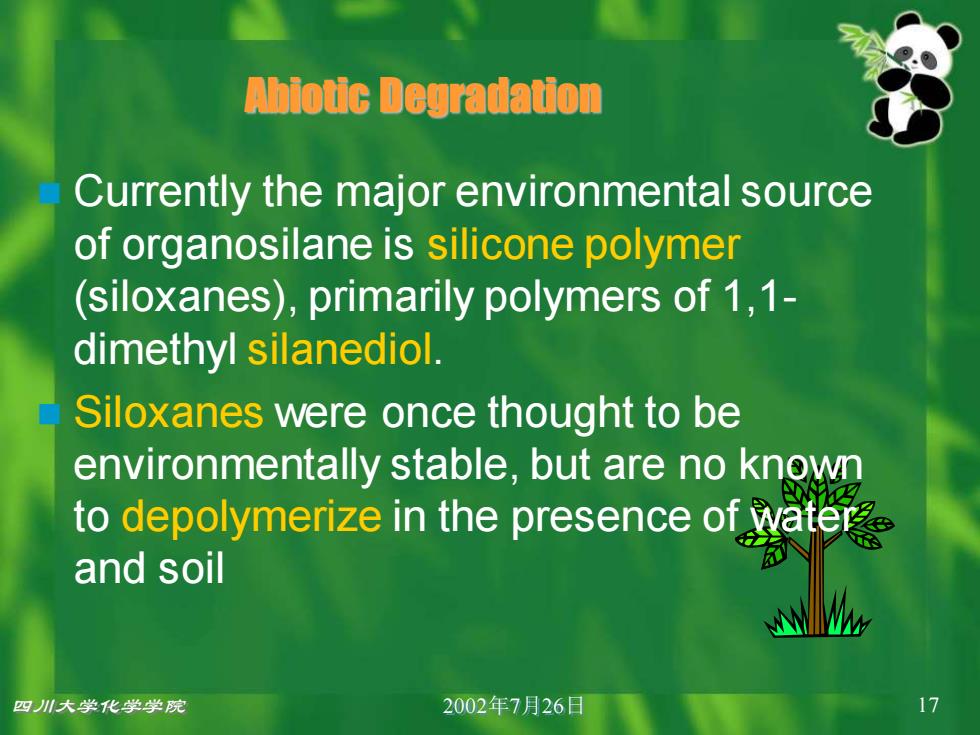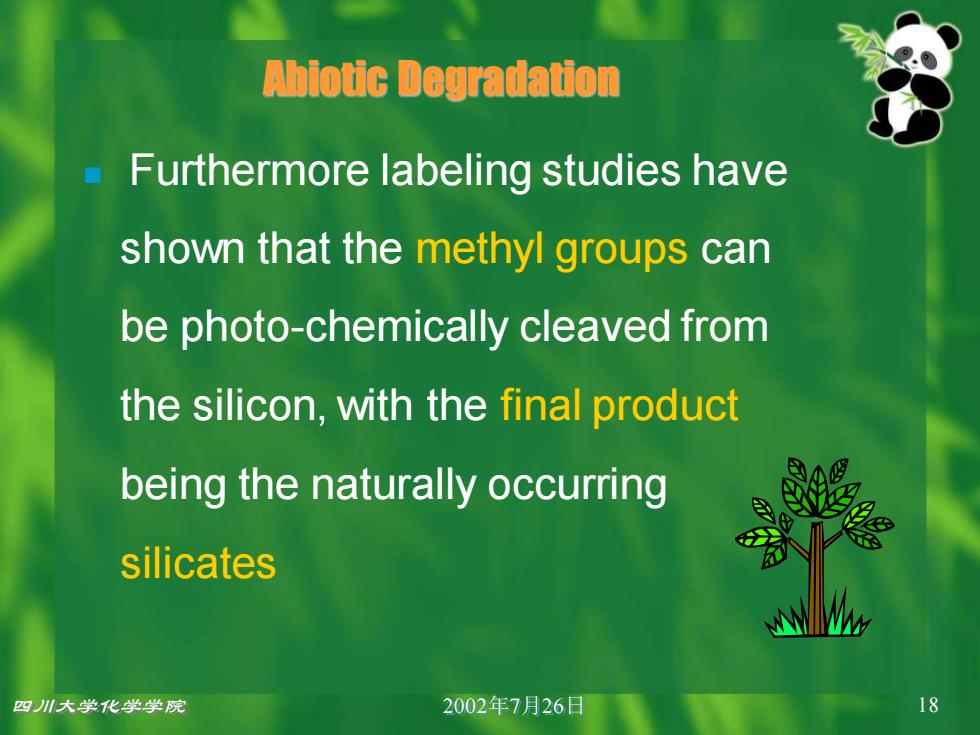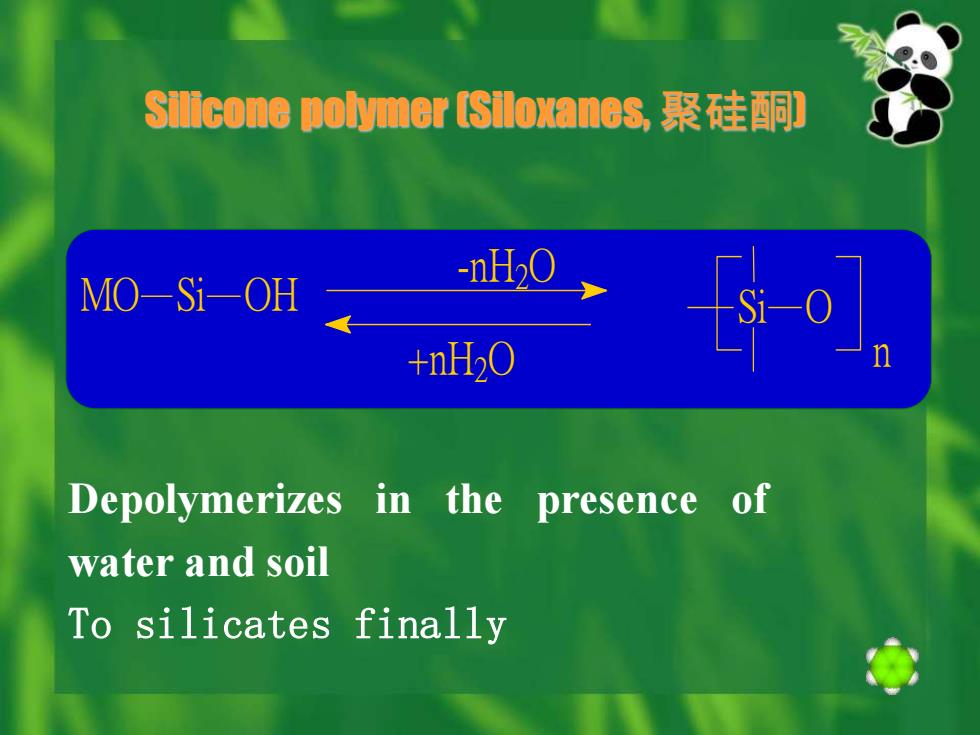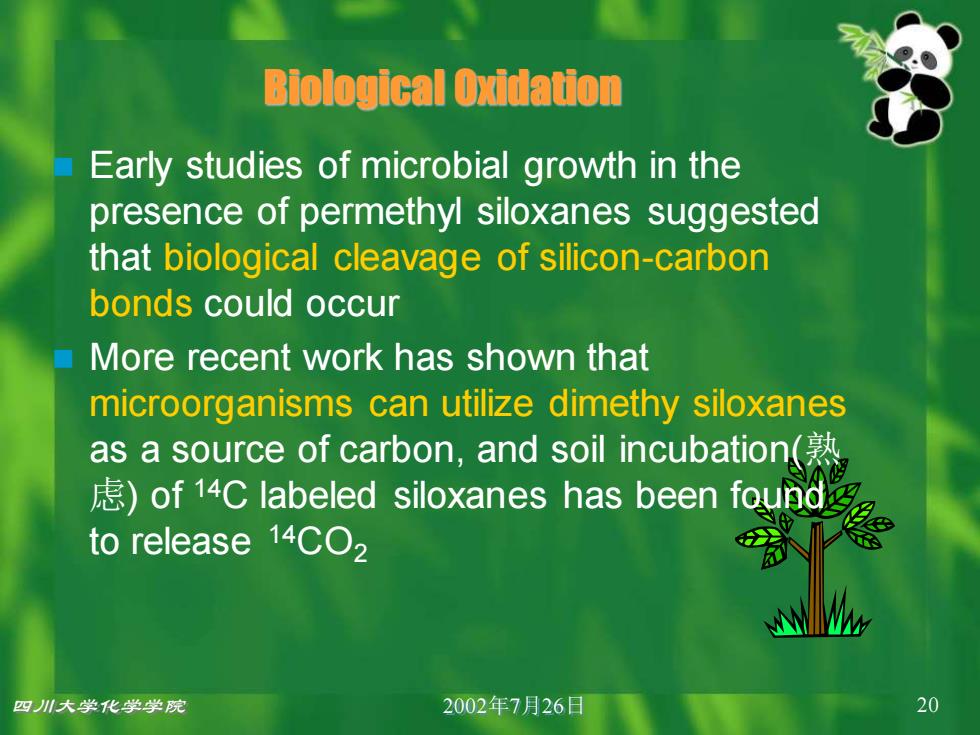
Abiotic Degradation Biological Oxidation 4.1.3 The degradation and oxidative metabolism of organic silicon compound An important component of designing safer chemicals is predicting their environment fate, and both abiotic degradation and biological oxidation can play a role. Designing chemicals that will biodegrade to innocuous products is highly desirable, and isosteric substitution of carbon with silicon in many cases may enhance abiotic degradation and biological oxidation
Abiotic Degradation Biological Oxidation 4.1.3 The degradation and oxidative metabolism of organic silicon compound An important component of designing safer chemicals is predicting their environment fate, and both abiotic degradation and biological oxidation can play a role. Designing chemicals that will biodegrade to innocuous products is highly desirable, and isosteric substitution of carbon with silicon in many cases may enhance abiotic degradation and biological oxidation

四川大学化学学院 2002年7月26日 17 Abiotic Degradation ◼ Currently the major environmental source of organosilane is silicone polymer (siloxanes), primarily polymers of 1,1- dimethyl silanediol. ◼ Siloxanes were once thought to be environmentally stable, but are no known to depolymerize in the presence of water and soil
四川大学化学学院 2002年7月26日 17 Abiotic Degradation ◼ Currently the major environmental source of organosilane is silicone polymer (siloxanes), primarily polymers of 1,1- dimethyl silanediol. ◼ Siloxanes were once thought to be environmentally stable, but are no known to depolymerize in the presence of water and soil

四川大学化学学院 2002年7月26日 18 Abiotic Degradation ◼ Furthermore labeling studies have shown that the methyl groups can be photo-chemically cleaved from the silicon, with the final product being the naturally occurring silicates
四川大学化学学院 2002年7月26日 18 Abiotic Degradation ◼ Furthermore labeling studies have shown that the methyl groups can be photo-chemically cleaved from the silicon, with the final product being the naturally occurring silicates

MO Si OH -nH2 O +nH2 O Si O n Silicone polymer (Siloxanes, 聚硅酮) Depolymerizes in the presence of water and soil To silicates finally
MO Si OH -nH2 O +nH2 O Si O n Silicone polymer (Siloxanes, 聚硅酮) Depolymerizes in the presence of water and soil To silicates finally

四川大学化学学院 2002年7月26日 20 Biological Oxidation ◼ Early studies of microbial growth in the presence of permethyl siloxanes suggested that biological cleavage of silicon-carbon bonds could occur ◼ More recent work has shown that microorganisms can utilize dimethy siloxanes as a source of carbon, and soil incubation(熟 虑) of 14C labeled siloxanes has been found to release 14CO2
四川大学化学学院 2002年7月26日 20 Biological Oxidation ◼ Early studies of microbial growth in the presence of permethyl siloxanes suggested that biological cleavage of silicon-carbon bonds could occur ◼ More recent work has shown that microorganisms can utilize dimethy siloxanes as a source of carbon, and soil incubation(熟 虑) of 14C labeled siloxanes has been found to release 14CO2